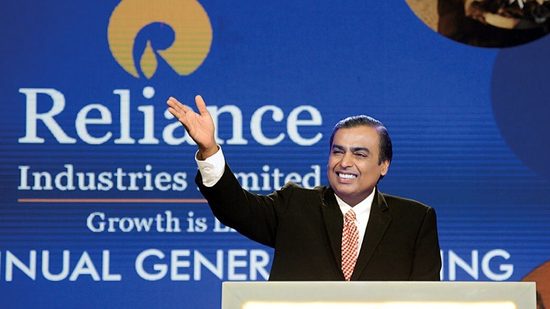
Why are ELSS Mutual Funds the Best Tax-Saving Option? Investing in ELSS mutual funds comes with the dual benefit of tax deductions and wealth accumulation over time. ELSS mutual funds have a lock-in period of just three years, the shortest among all tax-saving investments and have the potential to offer the highest returns among 80C options.
Investors look for investing possibilities in order to get consistent returns, build wealth over the long term, and reduce taxes. Although many investment opportunities result in earnings, they are taxed in accordance with the Income Tax regulations.
By making investments in well-known tax-saving securities, an investor can properly save on income taxes. The Equity Linked Savings Scheme, also known as ELSS funds, is one of the best tax-saving options. To assist you in making an informed investment decision, this article discusses tax-saving mutual funds and all of their numerous features.
What are tax saving mutual funds?
Mutual funds that save taxes, such as ELSS, are comparable to other mutual fund schemes but have the extra benefit of doing so.
Under Section 80C of the IT Act, tax-saving mutual funds or equity linked savings schemes (ELSSs) assist you in reducing your income tax. Every financial year, you are allowed to invest up to Rs 1.5 lakh in ELSSs and deduct your investments from taxes.
Mutual funds that save on taxes frequently invest in the market for growth-oriented stocks. As a result, investors can potentially earn good returns and contribute to the long-term creation of wealth.
Are you curious? You should familiarise yourself with ELSSs before continuing.
Mutual funds that offer tax benefits or ELSSs invest in stocks. Their risk is therefore extremely high. If you’re investing in equities mutual funds for the first time, you should be especially mindful of this element. The returns on ELSSs are not guaranteed, unlike regular investments like Public Provident Fund. In an unfavourable market, you can even lose money.
And thus, why should you buy ELSSs?
One is the possibility of higher returns from these strategies. These plans, as you are aware, make equity investments. And over time, stocks often provide bigger returns. The ELSS category, for instance, had a 10-year average return of almost 15%.
Two, among investments that save taxes, ELSSs have the shortest lock-in time. Government-backed investments make up the majority of the other 80C basket investment alternatives. They frequently have longer lock-in times. A 15-year product like PPF, for instance, enables partial withdrawals after six years. A five-year product, the NSC. Therefore, you should invest in ELSSs if you want access to your money in three years. However, don’t expect it to provide you with excellent profits in three years. Equity investing is something you should constantly keep in mind as a long-term strategy. Only if you have a five to seven-year financial horizon should you invest in equities mutual funds.
The third, and most crucial, thing to keep in mind is that ELSSs are a terrific starting point for many investors. They frequently begin with ELSSs, and the three-year lock-in period that is required in these plans enables them to withstand stock market turbulence. These investors begin investing more money in stock schemes once they begin to perceive the benefits, say after five or seven years.
Here are our suggested ELSSs for you to consider investing in the new year if you are interested in participating in these schemes. Notably, the list has not changed this month. Every plan on the list has kept its position. Axis Long Term Equity Fund, one of the suggested plans, has, nonetheless, spent the previous five months in the fourth quartile. The last three months have had Invesco India Tax Plan in the fourth quartile as well. Two months ago, it had been in the third quartile. Keep an eye out for our monthly updates to monitor the success of your ideas.
Best mutual funds to invest in for tax savings or ELSS in 2022:
1. Axis Long Term Equity Fund
2. Canara Robeco Equity Tax Saver Fund
3. Mirae Asset Tax Saver Fund
4. Invesco India Tax Plan Fund
5. DSP Tax Saver Fund
Here is our methodology:
The following criteria were used by ETMutualFunds to narrow down the equity mutual fund schemes.
1. Average daily rolling returns for the past three years.
2. Consistency in the last three years: A fund’s consistency is calculated using the Hurst Exponent, H. A fund’s NAV series’ unpredictability is measured by the H exponent. Compared to funds with low H, funds with high H typically have lower volatility.
3. a) The return series is referred to as a geometric Brownian time series when H = 0.5. It is challenging to forecast this kind of time series.
4. b) The series is referred to as mean reverting when H is smaller than 0.5.
5. c) A series is considered persistent if H is bigger than 0.5. The tendency of the series is stronger the larger the value of H.
3. Negative return risk: For this metric, we have only taken into account the mutual fund scheme’s negative returns.
X =Returns negative values
Y = the sum of all X’s squares.
Z = Y / the number of days used to calculate the ratio
Risk reduction: Square root of Z
4. Outperformance: Jensen’s Alpha has been used for the past three years to quantify outperformance. Jensen’s Alpha compares a mutual fund scheme’s risk-adjusted return to the expected market return forecast by the Capital Asset Pricing Model (CAPM). Higher Alpha means that the performance of the portfolio has surpassed the returns forecast by the market.
Average returns produced by the MF Scheme are calculated as follows: [Risk Free Rate + MF Scheme Beta * (Average Return of the Index..
5. Asset size: The minimum asset size for equity funds is Rs. 50 crore.






Comments are closed.